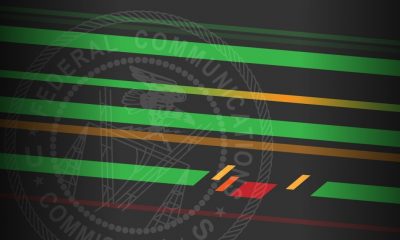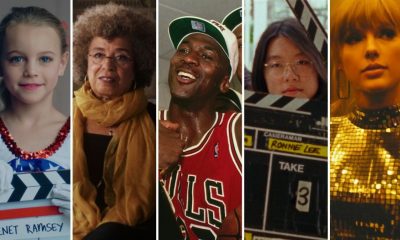Entertainment
Explainer: ‘Killers of the Flower Moon’s ending and cameo
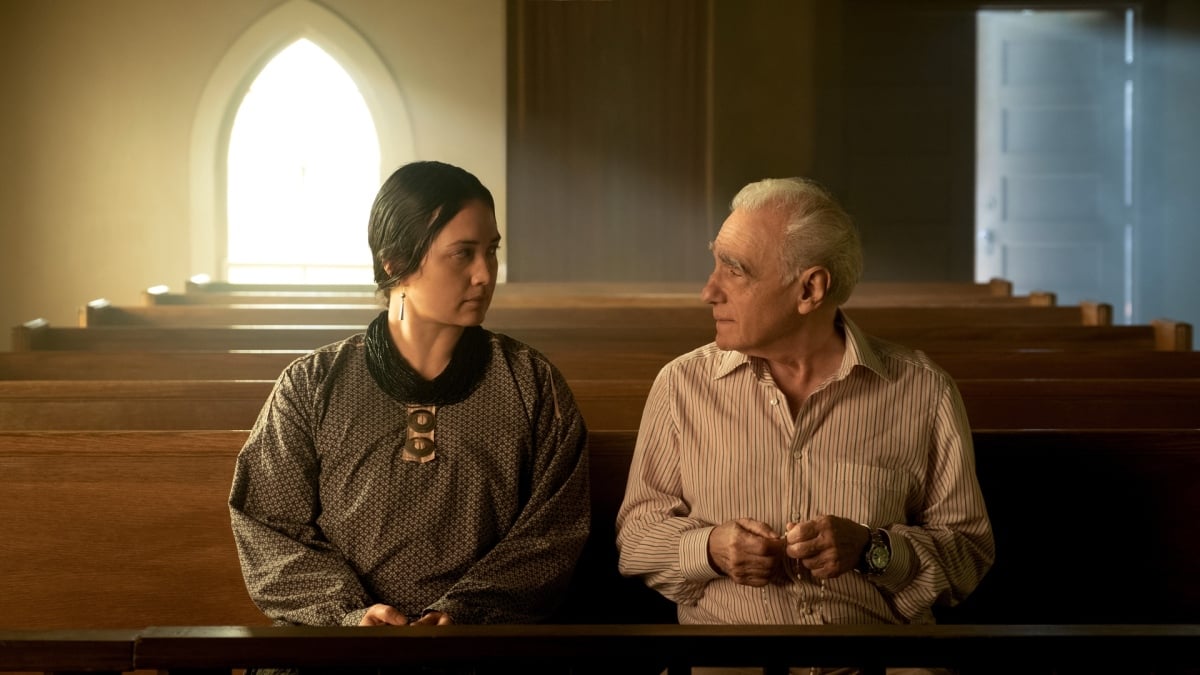
One of the most anticipated films this year, Killers of the Flower Moon has finally hit cinemas, and it feels like a mammoth achievement. Martin Scorsese’s violent and propulsive historical saga is adapted from David Grann’s 2017 nonfiction book exploring the conspiracy behind the murders of numerous Osage tribespeople in the 1920s. But the film adaptation remixes Grann’s structure, taking a handful of intriguing stylistic liberties. Perhaps the most intriguing flourish is its epilogue, which features a powerful cameo from Scorsese himself.
These murders have featured in major Hollywood films before, but only as a backdrop, such as in Mervyn LeRoy’s The FBI Story in 1959. With his epilogue, Scorsese offers salient commentary on how mainstream entertainment has — to ensure white comfort — frequently sanitized such brutality against Native Americans, and how this specific tale has been reduced to an oft-forgotten footnote in the pages of white supremacy.
The events have been fictionalized in numerous novels, but it wasn’t until Grann’s book that their full scope had been explored. In adapting this story, Scorsese and co-screenwriter Eric Roth refuse to sand down its sickening details, preventing white and other non-Native viewers from being lulled into distant sympathy. After its plot is wrapped up and its killers are caught and convicted, the film remains open-ended in a way, letting its historical wounds linger and fester without bookending them with the traditional closing text of a Hollywood biopic.
Instead, Killers shifts its mode of storytelling. It takes what appears to be a sharp left turn on paper, but this climax proves powerful in execution, fitting perfectly with Scorsese’s ambitious mission statement about our collective culpability in American white supremacy, and the erasure of Native suffering from the public consciousness.
What happens at the end of Killers of the Flower Moon?

Credit: Apple TV+
After Ernest Burkhart (Leonardo DiCaprio) testifies against his uncle, William Hale (Robert De Niro) — the kingpin behind a serial murder plot to acquire oil rights in Oklahoma — he’s confronted by his wife about his own role in the conspiracy. Specifically, Mollie (Lily Gladstone) confronts him about what, if anything, he had been mixing into her insulin shots, strongly implying that she knows he was behind the prolonged illness that nearly took her life.
Despite being given the chance to come clean, Ernest maintains his innocence in a scene where both his festering guilt and Mollie’s overwhelming despondency at having been betrayed are nauseating to watch. But as Mollie walks away from Ernest one last time, the scene transitions abruptly to its surprising epilogue. It’s set several decades later and features none of the film’s main characters.
Where outro text cards might ordinarily provide contemporary context, mentioning what became of each character after the film’s conclusion, Scorsese instead dramatizes this concept with a pointed purpose, as if to scrutinize the very idea of “closure” offered by biopics about historical suffering. Where convention might have dictated a touching crescendo, the musical outro to Mollie and Ernest’s final scene is brazen and adventurous.
Instead of fading out, the film transitions suddenly to the 1950s, as an episode of the J. Edgar Hoover-endorsed radio drama True Crime Stories — a fictitious version of shows like The Big Story (1947-1955) and This Is Your FBI (1945-1953) — is being recorded on a theater stage. As a narrator creates a framework and foley artists provide impromptu sound effects, a series of white voice actors (played by the likes of filmmaker Larry Fessenden and Jack White of the White Stripes) step up to a microphone to perform cartoonish versions of characters with whom we’ve spent the last three hours and change. This also includes caricatured impersonations of Native Americans, as the show dramatizes events that followed Hale’s trial.
A well-dressed live audience sits before the performing, laughing and cheering; it’s a fun night of casual entertainment. Behind the actors, and the show’s orchestra of live musicians, an enormous logo for Lucky Strike looms large. The famous cigarette company is the show’s sponsor and its raison d’être; to its corporate executives, how these events are portrayed likely isn’t important, so long as the show’s version of Ernest mentions their brand.
However, when it comes time to conclude Mollie’s story, and the show’s narrator mentions her remarriage and her death from diabetes in 1937, her obituary is read aloud by Martin Scorsese himself. From the moment Scorsese appears on screen — shot from a rear angle that highlights his distinct, bespectacled silhouette, as though he were announcing his own arrival — the vibe of the scene shifts dramatically. The snappy, mile-a-minute delivery gives way to a more thoughtful and considered delivery, as the musicians’ operatic score and the audience’s raucous response is replaced by the reflective silence between Scorsese’s words.
After he reads out Mollie’s obituary, he makes one departing observation: “There was no mention of the murders.”
This line harkens back to the final scene minutes before, between Ernest and his uncle Hal, who attempts to convince his dubious nephew of the futility of testifying in the name of justice for Native Americans. “There might be a public outcry, for a while,” Hale whispers. “But then you know what happens? People forget. They don’t remember, they don’t care. They just don’t care. It’s just going to be another everyday common tragedy.”
Hale, though he represents the uncompromising evil of white supremacy, is correct. The Osage murders would go on to become a historical curio at greatest to most non-Native Americans. If anything, that a fictitious 1950s radio show would dedicate a whole episode to the killings, racist caricature and all, is an optimistic concoction. The events would appear on a radio broadcast in the ’30s (G-Men, later known as Gang Busters) while Mollie was still alive, but after her passing, none of the FBI-centric radio series in the 1940s and ’50s would include it in their lineups, as though it had never happened. Even by the time of Mollie’s death — a mere decade after the trial — her place as a survivor of one of American history’s darkest chapters fails to warrant a mention in her own obituary, as Scorsese reminds us.
However, in its closing shot, the film jumps forward even further in time. Rather than ending on the dour note of historical erasure, as though this were the end of the Osage’s story, it pulls out slowly from a close up of a beating drum to an overhead angle of the tribe in modern day, dancing, chanting, and thriving. It’s a cinematic celebration of their cultural defiance and spiritual endurance in the face of rampant suffering so often struck from the public narrative. The film wrestles with this dynamic — the opposing forces of historical erasure and course correction — throughout several scenes, culminating in its climactic cameo.
What does Scorsese’s cameo in Killers of the Flower Moon mean?

Credit: Apple TV+
Scorsese has a tradition of cameos in his films, which dates back to his very first film from 1967, Who’s That Knocking at My Door?, in which he plays an uncredited gangster. Across his nearly 20 self-directed cameos, the famed filmmaker usually plays someone interacting with or observing the main characters. In two specific cases — Hugo and The Age of Innocence — that sense of observation becomes distinctly artistic and cinematic, since in both films he plays an early 20th century photographer preserving the characters on film. If you have a keen ear, you might hear his familiar voice in Killers of the Flower Moon‘s Washington, D.C. scene, when the Osage are posing for a picture. He’s directing them to look to the camera. But in the epilogue, Scorsese turns the camera on himself for a distinctly reflective purpose.
By filtering the history of Native genocide and Osage betrayal through the lens of Mollie and Ernest’s marriage, Killers of the Flower Moon becomes a dramatic exploration (and exposé) of the collective culpability of white supremacy in the United States. Although only a handful of the film’s white characters actually carry out the murders of Native Americans, nearly everyone outside the Osage tribe grants permission to these actions in some way, and ends up benefiting from them. Some provided cover and alibi, looking the other way when necessary, while others indirectly aided the conspiracy with lies and scams of their own. Through his own on-screen presence, Scorsese seems to subtly ask what his own role in this historical hegemony might be, especially against the backdrop of American entertainment
Throughout the film, Scorsese and his Native cast — comprising the likes of Gladstone, Cara Jade Myers, William Belleau, and Tantoo Cardinal — create deeply human portraits of the Osage people. There’s a tragic irony to the epilogue being purposefully turned into racist caricature within the radio show performed by a white cast. But here, Scorsese is mindfully illustrating how history and its tragedies are rewritten by those in power, in this case the white colonizers who benefitted by every disenfranchisement of the Native Americans. Such stories are often sanitized for easy enjoyment, either by downplaying the effects of this disenfranchisement and denying Native characters their full humanity (through broad stereotypes like the silent, honorable Native), or by subverting their place in this dynamic altogether, through repeated depictions of Native tribes as inhumane savages who victimize “innocent” white settlers — a common dynamic in Hollywood Westerns.
By recognizing this grim tradition of misrepresentation in its epilogue, Killers of the Flower Moon aims to be a corrective force in this ongoing tradition. It might be the first time many American viewers will have even heard about these murders, despite them having been depicted on screen as far back as the trial itself, in the lost and largely forgotten Tragedies of the Osage Hills by Native filmmaker James Young Deer. Just as the moving image can manipulate a country’s self-mythology — archetypes like the heroic cowboy and the “noble savage” have been culturally entrenched for decades — it can also illuminate its real history. For instance, recent HBO shows like Watchmen and Lovecraft Country lead to many American viewers learning of the Tulsa “Black Wall Street” Massacre of 1921. Fittingly, the characters in this film also learn about these Tulsa riots through cinematic news reels, hinting at Scorsese’s awareness of cinema’s place in the public conversation, and people’s understanding of the world.
By making himself the focus in these concluding moments, at a time that coincides with his own childhood and his development as a storyteller — his first short film, Vesuvius VI, was made the same year as The FBI Story — Scorsese re-introduces the question of cinematic culpability. By turning the lens on himself, he transforms this grappling with cinematic history into a personal act. It becomes a vital call to action, demanding a deeper self-assessment by non-Native artists (especially white artists) of their place in this storytelling lineage, and in existing capitalist systems. He recognizes the place of mass entertainment in preserving the past — and in erasing it.
The epilogue of Killers of the Flower Moon challenges a history of erasure.

Credit: Apple TV+
Right from its first few scenes, Killers of the Flower Moon portrays the erasures experienced by the Osage tribe — the erasure of its culture and traditions, and the erasure of the Osage people from mainstream American life — using flourishes which draw from literary and cinematic sources. Its opening images, shot in color and widescreen, depict a funeral for a ceremonial pipe rather than a person, symbolizing the loss of Native culture to colonialism; these are taken not from Grann’s book but from the novel A Pipe for February by Osage author Charles H. Red Corn, which focuses on the same events. Soon after, when the tribe discovers oil underneath their land, the visual language Scorsese uses to denote their wealth and prosperity is that of early silent cinema, between 4:3 black-and-white footage and inserted title cards.
Coupled with this retro aesthetic, their lavish appearances — from opulent jewelry and flapper outfits, to expensive cars and recreational planes — likens the film’s wealthy Osage characters to the larger-than-life stars of Hollywood’s Golden Age. This serves a dual purpose: Not only does it quickly tell us about their position in society and the reverence with which their riches were looked upon, but it also acts as an imaginary cinematic corrective. It depicts the film’s Native actors as a fixture of the early days of American cinema, a place they were often denied. Scorsese introduces this idea of an alternate cinematic history, only to suddenly interrupt this escapist imagery with stark, violent portrayals of numerous unsolved Osage murders. The last remnants of this black-and-white footage, depicting smiling characters who are soon killed without remorse, ceases to be celebratory. It becomes an obituary in and of itself.
Scorsese’s cameo appearance, in which he mentions this erasure, crystalizes the movie’s purpose; the director even stands on a stage in front of a microphone as though he were reading from a personal manifesto. His directing prowess has no shortage of critical appraisal, but his place as an actor within his own work is an underrated facet of Scorsese’s filmmaking. Some might call director cameos excessive or self-aggrandizing; in Hitchcock’s case, they were usually Easter eggs. For Scorsese, these appearances serve a conversational function, but perhaps none more so than in Killers of the Flower Moon.
In concept, the idea of a director centering himself during a film’s emotional denouement echoes the prototypical image of an ego-driven auteur. However, there’s a knowing and mournful humility to Scorsese’s performance here, which warps the film’s most farcical scene into its most poignant.
His delivery of Mollie’s obituary is a vulnerable lament, from a now-80-year-old filmmaker in the twilight of his career, as though he regrets being unable or unwilling to do more for her and for the Osage tribe — who have now embraced him as “Uncle Marty” — during the preceding years. This is precisely why Killers of the Flower Moon stands as a necessary work in the conversation on American history, cinematic or otherwise. It’s not only a reflection of past horrors, but an effort to re-align those horrors with a more detailed understanding of our place within them, as individuals and as a people.
Killers of the Flower Moon opens in theater Oct. 20 then will stream on Apple TV+ at a TBD date.
-
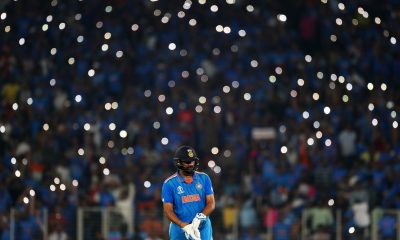
 Business6 days ago
Business6 days agoIndia-Pakistan cricket match helps Disney’s Hotstar set global streaming record
-

 Business6 days ago
Business6 days agoThe SBF trial continues, Atlassian acquires Loom, and OpenAI explores making its own chips
-
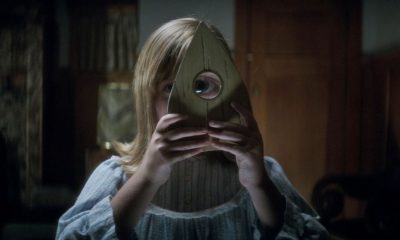
 Entertainment7 days ago
Entertainment7 days ago‘Ouija: Origin of Evil’ Easter egg spotted in Mike Flanagan’s ‘The Fall of the House of Usher’
-

 Entertainment6 days ago
Entertainment6 days agoChatting with Meta’s dystopian AI personas leaves more questions than answers
-
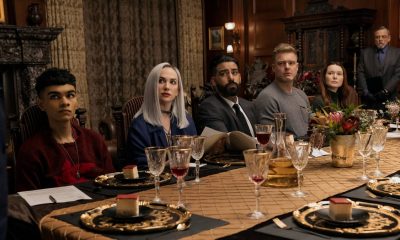
 Entertainment6 days ago
Entertainment6 days agoThese tiny ‘Fall of the House of Usher’ clues give away how each of the children die
-
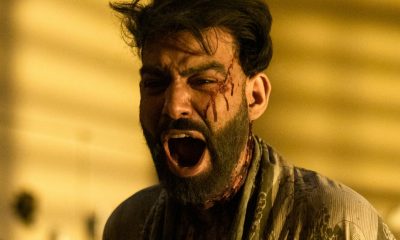
 Entertainment6 days ago
Entertainment6 days ago‘The Fall of the House of Usher’: The most WTF moments
-

 Business6 days ago
Business6 days agoBlue checks aren’t protecting sex workers from X’s porn crackdown
-

 Business7 days ago
Business7 days agoTikTok scores sizable Disney deal including a content hub and publisher partnership



